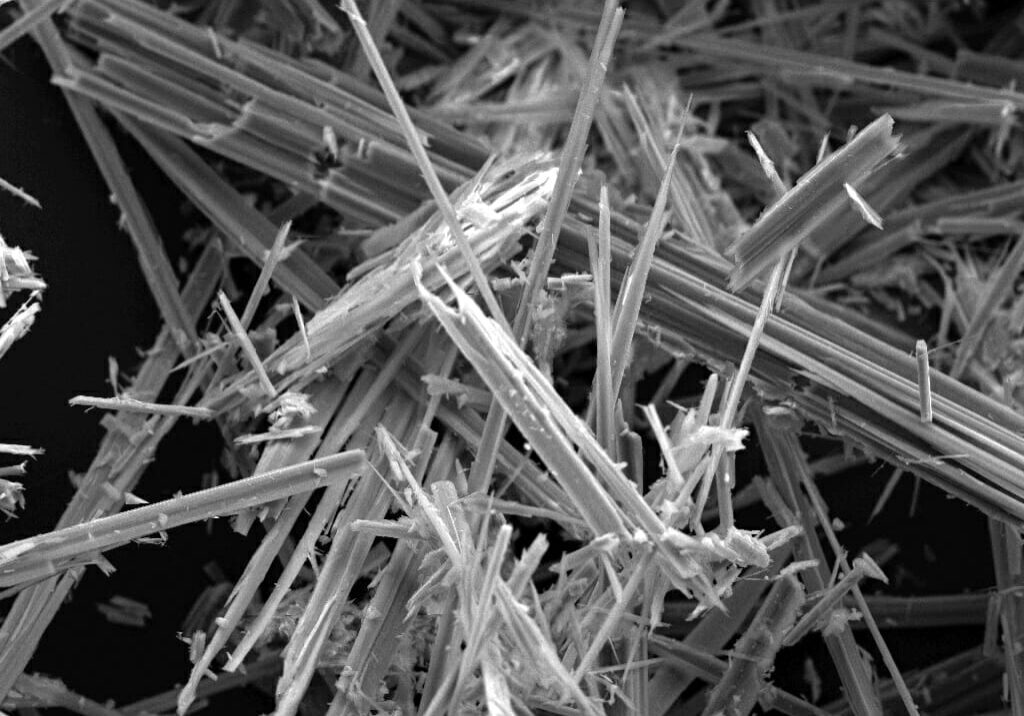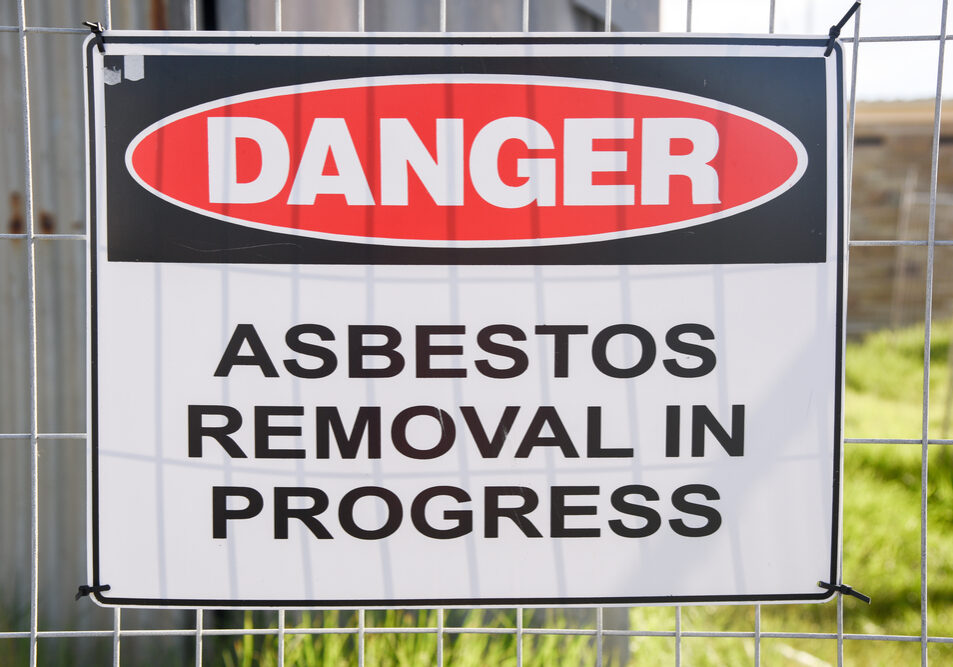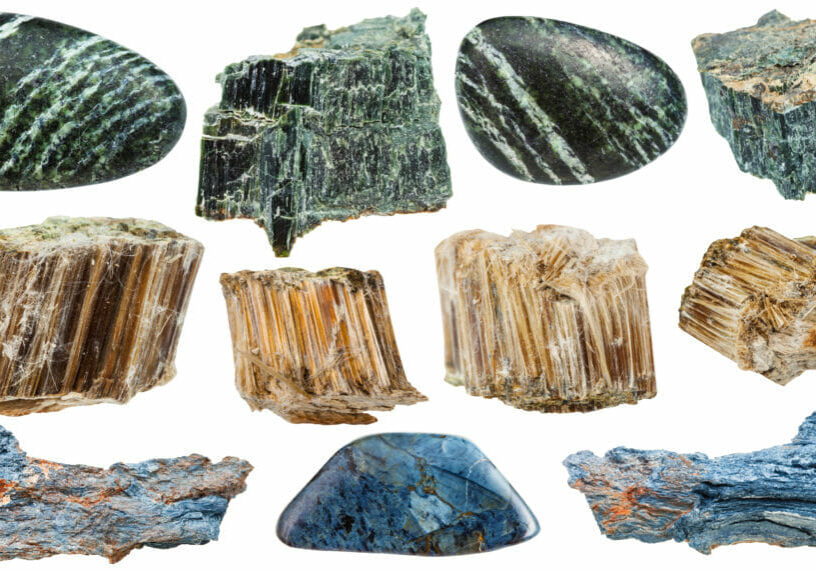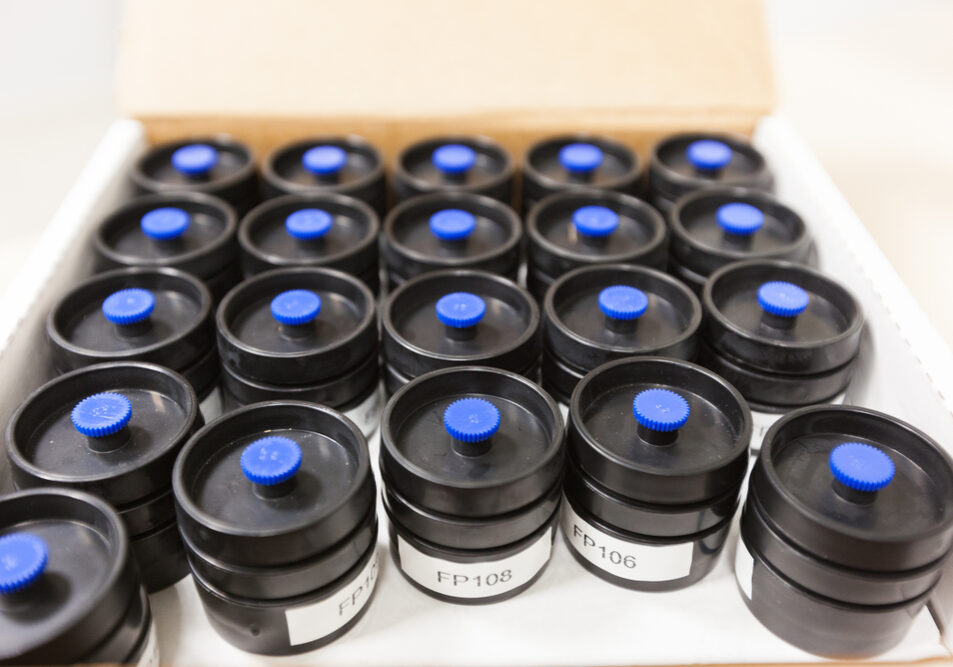What is asbestos and how can I identify it?
Asbestos is the name for a group of naturally occurring silicate minerals which share a similar crystalline structure with extremely long, fine, silicate fibres which are prone to fracturing into smaller pieces. These minerals have been mined from the earth since ancient times and incorporated into other products due to their excellent properties of insulation and fire resistance.

Bronze age pottery from Norway containing 60-80% asbestos. (Røe & Stella 2015)
In modern times the number of materials asbestos is used in has exploded from building materials to clothing to asphalt. Due to it’s favourable properties and widespread use in construction it has been labelled as a ‘miracle fibre’ and it’s name ‘asbestos’ derived from the ancient Greek word for ‘inextinguishable’.
However, it has since become clear that that breathing in the microscopic silicate fibres can lead to a variety of asbestos related diseases and lung cancer making it a serious risk to public health.
Types of Asbestos
In it’s pure form asbestos is a brittle, fibrous mineral of various colours from white to grey to brown. There are six types of asbestos minerals with different uses. Chrysotile, or white asbestos, is the most common type making up 90% of asbestos production.
1. Serpentine group (fluffy snake like fibres)
- Chrysotile – white asbestos, most common type of asbestos
2. Amphibole group (straight, brittle fibres)
- Amosite – brown asbestos (grunerite)
- Crocidolite – blue asbestos (riebeckite)
- Anthophyllite
- Tremolite
- Actinolite

Naturally occurring asbestos minerals.
How common is asbestos ?
Australia had one of the highest rates of asbestos use in the world up until the mid-1980’s when it’s negative health effects became well known leading to severe restrictions in it’s use and eventual ban on asbestos products in 2003. It is not only present in ‘fibro’ homes but can be present in any type of building, in fact the Asbestos Safety and Eradication Agency estimates around one-third of all homes built in Australia contain asbestos products. Asbestos products are very likely present in homes which have been built or renovated between the mid 1940’s and 1980. To break it down, the likelihood a home contains asbestos if your home was built:
- before the mid-1980’s – highly likely
- from mid 1980’s – 1990 – likely
- 1990 – 2003 – unlikely
- Post 2003 – Very unlikely, asbestos is banned but it’s still may be present if using imported products.
Asbestos containing products
Most people are aware of asbestos products used in roofing, wall cladding, vinyl tiles and fencing (known as ‘super-six’). However there are a huge range of asbestos products such as:

Bonded products
The difference between friable and bonded products is the hardness and ability to break the product down. If the material can be crumbled or damaged with your hand it is classified as friable. Bonded products are considered safer as the asbestos fibres are glued down in a stable matrix such as in wall cladding or tiles. However, bonded products may become friable with age as they are exposed to the elements and begin to break down. The most common forms of bonded asbestos are as follows:
- Roofing sheets and tiles
- Shingles and siding (villaboard and similar)
- Exterior and interior wall cladding
- Eaves, soffit boards and roof fascia
- Linoleum flooring and vinyl floor tiles (beware as the backing may be classed as friable, see below)
- Super six corrugated fencing
- Thermal boards around fireplaces
- Water or flue pipes.
Friable products
Friable products are more dangerous than bonded products as extremely high quantities of fibres are released into the air when removing them. It is a legal requirement to engage a licenced asbestos removalist when removing friable asbestos and to engage an independent hygienist to undertake air monitoring. Friable asbestos products include but are not limited to:
- ‘Mr Fluffy’ type insulation
- Textured paints such as the 70’s ‘popcorn’ ceilings
- Carpet underlay
- ‘Blackjack’ type glue on the backs of vinyl tiles
- Spray coating for fire protection
- Pipe lagging for thermal insulation
- Rope gaskets in boilers and furnaces
- Backing on floor tiles (both the tiles and/or adhesive may contain asbestos)
- Heat resistant fabrics
- Electrical switchboards
- Brick and plaster sealants and fillers.
How to identify asbestos products
We can be fairly certain that certain building products produced between the mid 1940’s and 1980 contain asbestos. However the only way to be sure a product is free of asbestos is to have it tested at a specialised asbestos testing lab. Unfortunately you cannot tell if a product contains asbestos just by looking at it.
Even buildings which have had their asbestos containing materials removed, can unknowingly be contaminated with traces of asbestos dust. This is usually because the proper work practices have not been followed when asbestos materials were removed and the material has cross contaminated other surfaces. Asbestos dust and other ‘friable’ forms of asbestos are the most risky as they can easily become airborne when disturbed leading to inhalation of asbestos fibres. Thankfully, although invisible to the eye, it is fairly easy to test for the presence of asbestos fibres.
It is also common for asbestos materials in older homes to have been covered up with carpets or tiles rather than being removed. Sadly this is now a common hazard in home renovations. In most cases exposure can be avoided simply by being aware of asbestos materials, employing the proper safety equipment and/or engaging a professional.
If you are unsure then we recommend that you do not disturb the material and seek a professional opinion as asbestos is only dangerous when disturbed or damaged.
For information on asbestos testing and remediation see our asbestos remediation services page or contact us directly.
![]()
Request a Quote
Fill in the Form below and we will be in touch.


















